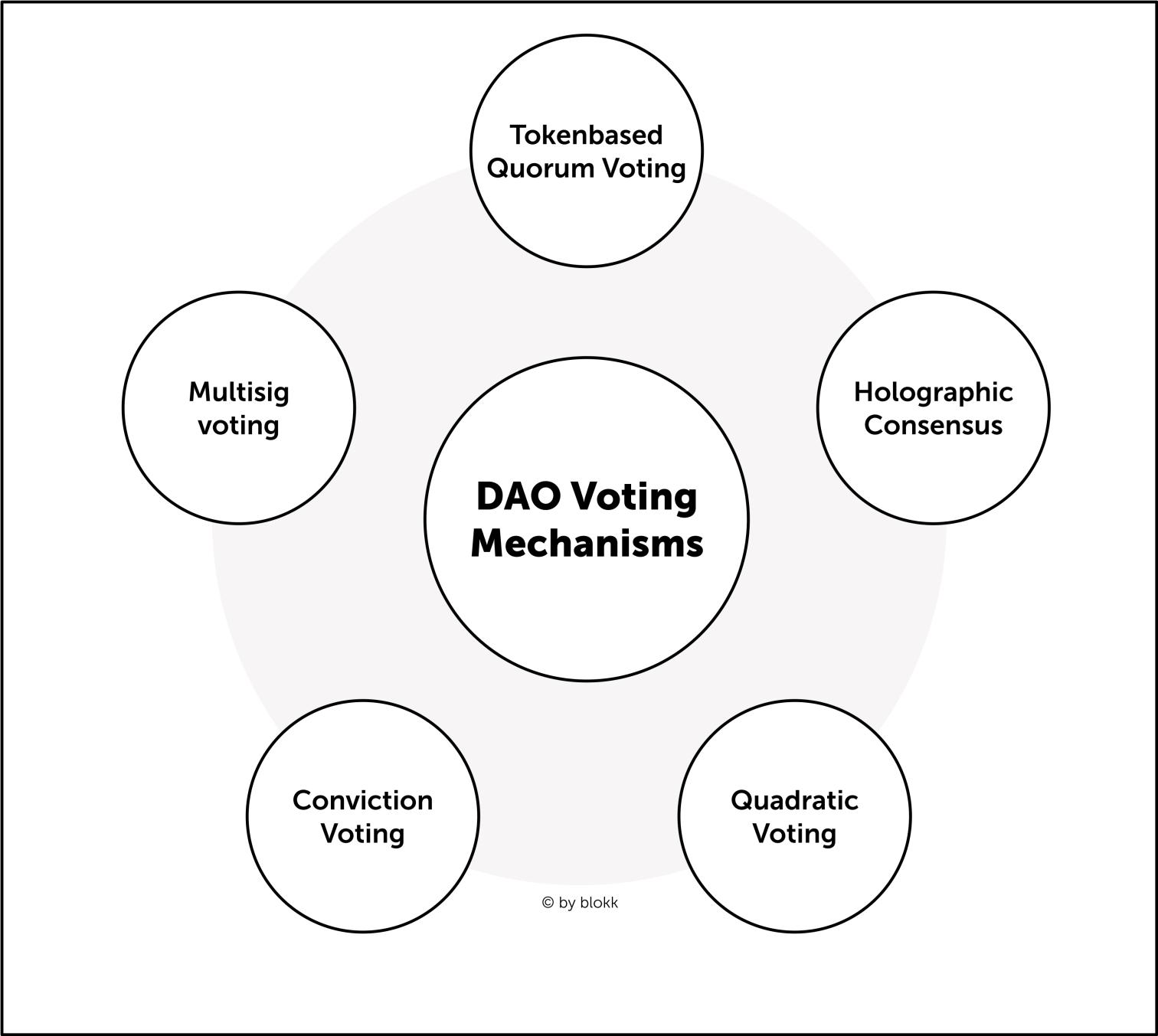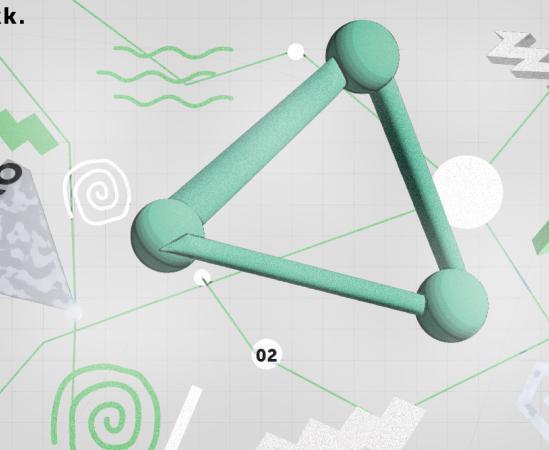The most common voting mechanism models for DAOs
Token-based Quorum Voting
A token-based quorum voting is a mechanism used by DAOs to make decisions. In this system, each member of the DAO is issued a certain number of tokens, which represent their ownership or stake in the organization.
When a vote is called, each member can use their tokens to cast a vote. The total number of tokens used to vote is referred to as the "quorum." In order for a decision to be made, a certain percentage of the total number of tokens in the organization must be used to cast votes. This percentage is known as the "quorum threshold."
If the number of tokens used to vote exceeds the quorum threshold, then the vote is considered valid and the decision is made based on the outcome of the vote. If the quorum threshold is not met, then the vote is considered invalid and the decision cannot be made.
One of the advantages of token-based quorum voting is that it ensures that decisions are made by a majority of the organization's members. This helps to prevent a small group of members from making decisions that are not in the best interest of the organization as a whole. Additionally, it provides a way for members to have a say in the decision-making process and to hold the organization accountable.
Quorum voting is actually the simplest and most basic mechanism that is used in the DAO’s decision-making process. The system requires a minimum number of votes, set prior to the voting period, for a proposal to be passed. There is a high probability that users will hoard tokens and enjoy more voting power. Relative quorum voting is focused on solving the low participation problem. In relative quorum voting, a proposal will be passed if 51% of the voters have voted in favor of it.
Quadratic Voting
Quadratic voting is a voting system designed to give participants more influence over decisions in a democratic process, by allowing them to express their preferences in a more nuanced way. It was first introduced by economist Glen Weyl and law professor Eric Posner in 2018.
In the context of Decentralized Autonomous Organizations, quadratic voting can be implemented to give members a more effective way of expressing their preferences on proposals, without necessarily giving more power to those who hold the most tokens.
The basic idea is that each voter is given a certain number of tokens (or "voice credits") that they can use to express their preference on a proposal. However, instead of each token counting as one vote, the number of votes a voter can cast is determined by the square root of the number of tokens they have. For example, if a voter has 100 tokens, they can cast 10 votes (the square root of 100).
This has the effect of giving more weight to those who are more passionate about a proposal, while limiting the influence of those who may hold a large number of tokens, but don't necessarily have a strong preference one way or another.
Another important aspect of quadratic voting is that it allows voters to distribute their votes across multiple proposals. For example, a voter could cast 5 votes in favor of one proposal, and 5 votes against another proposal, or they could choose to cast all of their votes on a single proposal if they feel very strongly about it.
Overall, quadratic voting can help to ensure that decisions in DAOs are made in a more democratic and inclusive way, while also allowing for a more nuanced expression of preferences from voters.
Holographic Consensus
Holographic consensus aims to reach decisions through a more inclusive and participatory process. Unlike traditional voting mechanisms, holographic consensus considers the opinions of all members of the DAO.
The mechanism works by assigning "voice credits" to each member based on their contribution to the DAO. Members who hold more tokens or have made more significant contributions will have more voice credits. These credits are then used to vote on proposals within the DAO.
However, the holographic consensus mechanism also allows members to delegate their voice credits to others who they believe are better equipped to make informed decisions. This delegation can be temporary or permanent, allowing for fluid and dynamic decision-making within the DAO.
Furthermore, holographic consensus allows for a more nuanced approach to decision-making by allowing members to vote on multiple options, rather than just a simple yes or no. This allows for a more accurate representation of the consensus within the DAO.
Overall, holographic consensus is designed to create a more inclusive and democratic decision-making process within DAOs, where all members have a voice and decisions are made based on the consensus of the group rather than the majority.
Conviction Voting
Conviction voting is a mechanism used by DAOs to facilitate decision-making and allocate resources based on the strength of individual preferences.
The basic idea behind conviction voting is that DAO members are given a certain amount of voting power that increases over time based on their level of commitment and conviction to a particular proposal. Members can then use this power to vote on proposals and allocate resources according to their preferences.
The key feature of conviction voting is that it incentivizes members to carefully consider the proposals and only vote for those they truly believe in, rather than simply casting a vote based on their personal biases or interests. This is because the more voting power a member puts behind a proposal, the more they stand to gain or lose if the proposal succeeds or fails.
Here's how Conviction Voting works in practice:
A proposal is submitted to the DAO, outlining the details of the proposal and the amount of funding or resources that it requires.
Each member of the DAO is given an initial allocation of voting power, which they can use to vote on the proposal.
Members can choose to cast their vote immediately, or they can hold onto their voting power and wait until they are more confident in their decision.
As time passes, the voting power of each member increases depending on how long they retain their voting power without casting a vote. This rewards members who carefully consider their options and only vote when they are confident in their decision.
Once the voting period has ended, the proposal is accepted or rejected based on the total amount of voting power that was cast in favor of the proposal. If the proposal is accepted, the requested funding or resources are allocated accordingly.
Overall, conviction voting is a powerful mechanism for DAOs because it encourages members to carefully consider proposals and only vote for those that they truly believe in. This can lead to more informed decision-making and better allocation of resources, ultimately with the goal to establish a more effective and efficient DAO.
Multisig voting
Multisig voting is a type of voting mechanism used by decentralized autonomous organizations that requires multiple parties to approve or reject a proposal before it can be executed. In a multisig voting system, a certain number of individuals, or "signers," is required to provide their approval or signature to authorize a transaction or proposal.
Here's how multisig voting works in a DAO:
First, the DAO sets up a multisig wallet that requires a certain number of signers to approve any outgoing transactions. For example, the wallet may require 3 out of 5 signers to approve a transaction before it can be executed.
When a proposal is submitted to the DAO, the members of the DAO can vote on it using a smart contract-based voting system. If the proposal is approved by a majority vote, it moves to the next step.
The proposal is then sent to the multisig wallet, where it requires the approval of the required number of signers. Each signer can approve or reject the proposal using their private key, which is linked to the wallet.
Once the required number of signers have approved the proposal, the transaction is executed, and the funds or assets are transferred as specified in the proposal.
Multisig voting is often used in DAOs to ensure that no single member or group of members has too much power or control over the organization's funds or assets. It adds an extra layer of security and accountability to the decision-making process and helps to prevent fraud, misuse of funds, or other types of abuse.



